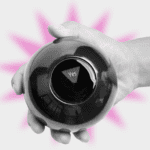We know the theory of agile frameworks that currently exist in different companies, surely you have come across some such as: SAFe, SCRUM, Kanban, XP, among others. But do we really know what really moves the needle for success when we develop a team in agile methodologies?
In this small space we have summarized the 3 main keys, among the many existing ones, of the success in the development of a team and project in agility:
Living Culture:
It does not matter if your team is made up of 3 people or is a tribe that develops initiatives of +50 people in the same team. The culture must be created together through dynamics that allow everyone to be part of the development or feel identified with the results. In this exercise, the team should be allowed to challenge any variable that involves them, even being able to question the company’s work hours. A good practice is to consider the team as an independent unit in order to remove restrictions from the company or the organizational area
Framework as a Guide and not as an Obligation:
We have seen more than one team wanting to be the “ideal team” applying to the letter the ways of working written in the methodology and the guidelines provided by the different frameworks, but this has usually failed as an attempt to apply agility, since it takes away the flexibility for the team to develop as they like. In many projects we recommend incorporating different best practices from multiple frameworks to ensure creating the best version of the team flow specific to the project and context.
Approach to Value:
When we are starting out in an agile team, it is very easy to err on ensuring the operations and neglecting the strategy. Therefore, our first step before deploying an agile team is to know where we want it to go. A very efficient way of working on this is through OKR’s (Objectives and Key Results), which focus the daily effort of the team towards the company’s quarterly objectives; measuring, evaluating and improving at a rate of 2 average weeks to ensure that business goals are achieved.
We also identified that the teams that develop continuous improvement as the fundamental basis of the culture achieve a “cruise” work rate 30% faster than traditional teams. At this point it is essential to embrace the error as a fundamental part of the development and delivery of value.
If you are interested in improving the image of your work team, you need a reliable agency to help you enhance all the capabilities of your brand, contact us and let’s start a story together.

















